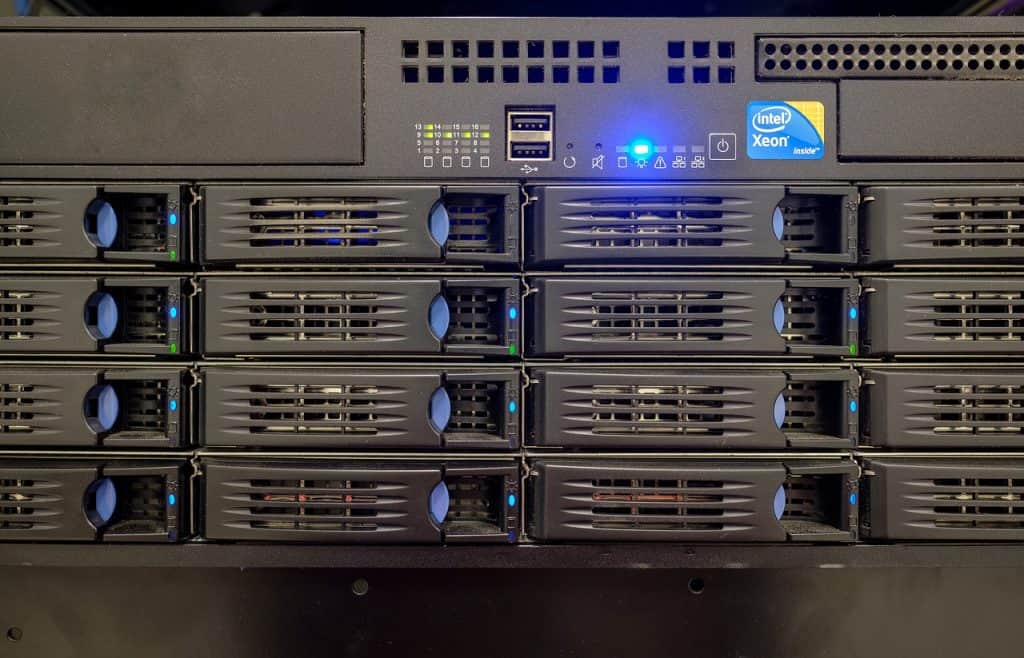Introduction
Linux servers are used in local network environments to provide simple network services, besides running large Internet web and database applications. The Linux server is up to the task of running a local network. Below are the most common services which are discussed in this article.
- File Sharing Service
- Printer Sharing Service
- DHCP Service
- Logging Service
- DNS Service
- SNMP Service
- NTP Service
File Sharing Service
There are many ways to share files in a local network. One way is to use a software application that allows you to share files between computers. Another way is to use a file server.
Additionally, in a local network setting, there are two fundamental techniques for exchanging files:
In a peer-to-peer network, one computer allows another computer to access data stored locally on its hard drive. This strategy allows two employees to collaborate on a tiny local network, but it gets more challenging if more than two individuals need to share data.
A centralized file server is used in the client-server technique of file sharing to share files that numerous clients can view and alter as required. A centralized file server, on the other hand, requires an administrator to manage who has access to which files and folders, securing them against unwanted access.
In the Linux server, there are two common software packages used for sharing files: NFS and Samba.
NFS
NFS is a networked file system protocol that enables computers to share files across a network. It is often used in UNIX and Linux networks.
A Linux system can use NFS to distribute a part of its virtual directory across the network, allowing clients and other servers to access it.
nfs-utils is the software package that is utilized to do this. The nfs-utils package includes NFS drivers as well as client and server software for sharing local files on the network and connecting to remote directories shared by other Linux systems on the same network.
Linux system can mount remotely shared NFS folders almost as simply as if they were on a local hard disk partition using the nfs-utils package.
Samba
While NFS may be used on Windows workstations and servers, Microsoft’s System Message Block (SMB) protocol is the preferred file sharing mechanism in Windows.
Samba is a software application that enables Linux computers to communicate with Windows clients and servers.
Your Linux system may use Samba to connect to Windows server shared folders as a client or as a server, allowing Windows workstations to access shared files on the Linux system.
Configuring the necessary options in Samba to govern access to your shared files takes some time.
Print Sharing Service
Common Unix Printing System) is a printing system providing a standard interface between computer applications and printers. CUPS is a successor to the Common UNIX Printing System (LPD). CUPS is a free software released under the GNU GPL. It was started in 1999 by Easy Software Products, Inc.
By providing a standard application interface that functions over specific printer drivers, the CUPS software allows a Linux system to connect to any printer resource, either locally or across a network.
The printer drivers are the heart of CUPS. CUPS drivers are created by several printer manufacturers so that Linux computers may communicate with their printers. The Internet Printing Protocol is used by CUPS to connect to network printers (IPP).
CUPS allows you to share a locally attached printer with other Linux computers in addition to connecting to a network printer. This enables you to connect a printer to a Linux server and distribute it across a local network with different users.
DHCP Service
To communicate with other devices on a local network, each device must have its own IP address.
Clients can use DHCP to ask a DHCP server for a valid IP address for the network. The IP addresses are assigned by a central DHCP server, which ensures that no two clients receive the same IP address.
Many different sorts of devices may now be configured as DHCP servers on a network. Most residential broadband routers, as well as most server-oriented operating systems like Windows and, of course, Linux, support this capability.
The Internet Systems Consortium (ISC) maintains the most common Linux DHCP server software, which is known as DHCPd. This is available in almost all Linux server distributions’ software repositories.
You’ll need to instruct your Linux clients to utilize the DHCPd server to get their network addresses once it’s up and running on your network.
Logging Service
The logging service in Linux has a standard file logger that is at /var/log/messages. Linux maintains log files that record various key details about the system as it runs.
In a network setting, having Linux servers store their system logs on a remote logging server might be useful.
The remote logging server provides a secure backup of the original log files, as well as a secure storage location for logs in the event of a system crash or an attacker break-in.
In Linux, there are two primary logging packages, and which one a system uses is determined by the starting software it employs.
The rsyslogd service application is used by the SysVinit and Upstart systems to accept logging data from remote servers.
Many current applications utilize a kind of logging that Rsyslogd provides. Every logged message has at least a time and a hostname field, and in most cases, a program name field as well, depending on how reliable the logging software is.
The journald service is used by the Systemd system for both local and remote logging of system information.
Configuration files are used by both rsyslogd and journald to control how data is logged and which clients the server receives log messages from.
DNS Service
On networks, DNS translates IP addresses to a host naming scheme. The names of servers on the local network are found by using a DNS server as a directory lookup.
DNS naming services are provided by Linux servers using the BIND software package.
‘named’, the server daemon that runs on Linux servers and resolves hostnames to IP addresses for clients on the local network, is the key program in BIND.
The beauty of DNS is that it allows one BIND server to speak with other DNS servers in order to seek up an address on other networks. Clients can point to a single DNS name server and resolve any IP address on the Internet as a result!
Because the DNS protocol is based on text, it is vulnerable to attacks such as hostname spoofing. To assist offer a layer of security in the hostname lookup process, the DNSSEC protocol wraps conventional DNS packets in an encryption layer. To ensure optimal security, make sure your BIND installation supports DNSSEC.
SNMP Service
Being responsible for multiple hosts and network devices for an organization can be an overwhelming task.
Trying to keep up with what devices are active or which servers are running at capacity can be a challenge.
The Simple Network Management Protocol (SNMP) provides a way for an administrator to query remote network devices and servers to obtain information about their configuration, status, and even performance.
SNMP operates in a simple client/server paradigm. Network devices and servers run an SNMP server service that listens for requests from SNMP client packages. The SNMP client sends requests for data from the SNMP server.
The current version (SNMPv3) utilizes both strong authentication and data encryption capabilities as well as provides a more streamlined management system.
One popular option is the Net-SNMP suite, which includes the snmpd daemon and a variety of tools for managing and monitoring devices. Another option is the UCD-SNMP suite, which also provides a daemon (snmpd) and a variety of tools, but is a bit more lightweight than Net-SNMP.
NTP Service
Many network applications need that both servers and clients’ internal clocks be synced with the same time in order to function properly.
This is accomplished via the Network Time Protocol (NTP). It allows servers and clients across diverse networks to synchronize on the same time source, adding or deleting fractions of a second as needed to keep in sync.
The ntpd application for Linux systems synchronizes a Linux system with distant NTP servers through the Internet. It’s usual for a single Linux server to utilize ntpd to synchronize with a distant time standard server, and then for all other servers and clients on the local network to synchronize their times to the local Linux server.
Conclusion
There are many ways to share files in a local network. A file server requires an administrator to manage who has access to which files and folders.
The CUPS software allows a Linux system to connect to any printer resource, either locally or across a network.
Each device on a local network must have its own IP address, which is assigned by a central server.
The Rsyslogd service is used by the Systemd system for both local and remote logging of system information.
Simple Network Management Protocol (SNMP) provides a way for an administrator to query remote network devices and servers.
SNMPv3 utilizes both strong authentication and data encryption capabilities. The ntpd application for Linux systems synchronizes a Linux system with distant NTP servers through the Internet.
FAQ:
how to restart network services in linux?
To restart networking using the service command, open a terminal and execute the following command:
sudo service networking restart
which file in the linux system lists all network services and their corresponding port?
The file that lists all network services and their corresponding port is /etc/services.
what is the native file-sharing protocol in linux?
The native file-sharing protocol in linux is called the “Network File System” or “NFS”.
in Linux systems, what file contains the settings for the dhcp service?
dhcpd.conf is the file that contains the settings for the dhcp service in linux systems.
- To mount folders from remote Linux servers on your local Linux server, what protocol should you use?
- SNMP
- NTP
- DHCP
- NFS
Answer:
D. The NFS protocol is used to share folder areas on the network with clients.
- Your Windows workstations can mount a folder on a Linux server using the software package.
- ntpd
- Samba
- DHCPd
- Evolution
Answer:
B. The Samba software package
- Which two software packages are used in Linux to maintain log files? (Choose two.)
- rsyslogd
- journald
- ntpd
- DHCPd
Answer:
A, B.
- Which software program should you load on your Linux server to synchronize its time with a standard time server?
- DHCPd
- BIND
- ntpd
- Samba
Answer:
C. The ntpd service.
- What software package allows a Linux server to print to a network printer?
- DHCPd
- BIND
- ntpd
- CUPS
Answer:
D. The CUPS application

